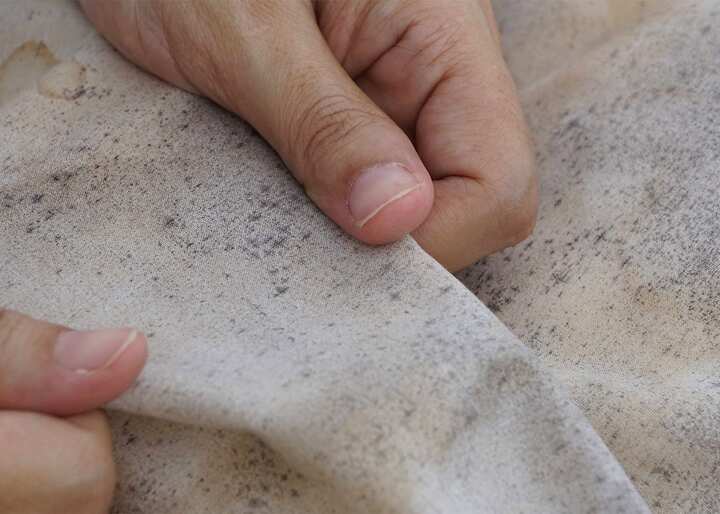Is Dry Cleaning Necessary After Mold Removal?
Mold growth is a common issue that affects many households. According to the Centers for Disease Control and Prevention (CDC), mold growth can cause health problems such as allergies, respiratory issues, and even infections. Mold can grow on various surfaces, including clothes, and its removal can be a daunting task.
Once mold has been removed from clothes, the question arises, should they be dry cleaned? Dry cleaning is a process that involves the use of solvents to remove dirt and stains from clothes. It is commonly used for delicate fabrics that cannot be washed in water.
Dry cleaning after mold removal is an interesting topic as it raises questions about the effectiveness of the process and the risks of not doing it. In this article, we will explore the dangers of mold on clothes, steps to remove mold from clothes, potential risks of not dry cleaning clothes after mold removal, factors to consider before dry cleaning clothes, and alternatives to dry cleaning clothes after mold removal.
Understanding the Dangers of Mold on Clothes
The presence of mold on clothing poses potential health hazards, making it imperative to understand the dangers associated with it.
Mold spores can cause respiratory issues, skin irritation, and eye irritation, particularly for people who are allergic to mold.
If left untreated, mold on clothing can spread to other items in the closet or storage area, leading to further contamination.
Additionally, mold can weaken the fabric fibers, leading to damage and potentially ruining the clothes.
Therefore, it is essential to address mold on clothing promptly, taking all necessary precautions to protect yourself and others from potential health hazards.
Steps to Remove Mold from Clothes
A thorough process of eliminating mold from clothes involves several steps that include washing the clothes with hot water and detergent, using vinegar or borax as an additive, and exposing them to sunlight or air-drying to ensure complete removal of mold spores.
It is important to note that mold on clothes can pose serious health risks, and therefore, it is crucial to take necessary steps to remove it completely.
Firstly, one should brush off any visible mold spores from the clothes before washing them in hot water with a strong detergent.
Adding vinegar or borax to the wash can help to kill mold spores and prevent them from returning.
After washing, it is best to dry clothes in direct sunlight or air-dry them to ensure complete removal of moisture and mold spores.
It is important to remember that simply dry cleaning the clothes may not be enough to remove all the mold spores, and therefore, it is essential to follow these steps to ensure complete removal of mold from clothes.
Potential Risks of Not Dry Cleaning Clothes After Mold Removal
Neglecting to properly sanitize clothes following mold removal may result in the persistence of harmful mold spores, potentially causing long-term health consequences.
Although it may seem like a hassle to dry clean clothes after mold removal, it is important to do so in order to eliminate any remaining spores that could pose a threat to your health.
Mold spores can easily attach themselves to clothing fibers and can continue to grow and spread if not properly removed.
This can lead to respiratory issues, allergies, and other health problems.
Therefore, it is crucial to take the necessary steps to properly sanitize and clean clothes after mold removal to ensure the safety and well-being of those who wear them.
Factors to Consider Before Dry Cleaning Clothes
Considering the various elements at play, dry cleaning clothes following mold remediation can be likened to a crucial layer of protection against the potential spread and persistence of harmful mold spores on clothing.
It is important to take into account the severity and type of mold present before deciding on a course of action.
Some types of mold can be easily removed from clothing through washing, while others require more intensive methods such as dry cleaning.
It is also important to consider the material of the clothing, as some fabrics may be more susceptible to mold growth and may require special care.
Additionally, the length of time the clothing was exposed to mold and the extent of the contamination should be taken into consideration.
Failure to properly clean clothing after mold remediation can result in potential health risks and the recontamination of previously remediated areas.
In the interest of maintaining a safe and healthy environment, it is recommended to consult with a professional and have clothing dry cleaned following mold remediation.
Alternatives to Dry Cleaning Clothes After Mold Removal
Exploring alternative methods of cleaning clothing after mold remediation may offer cost-effective and environmentally friendly options, while still effectively removing mold spores and preventing recontamination.
One alternative method is using a vinegar solution to kill the mold and remove the stains. Vinegar is a natural substance that is safe to use, and it can effectively remove mold spores.
Another option is using baking soda to absorb any moisture and odors left behind by the mold. This method is also safe and effective and can be used in conjunction with the vinegar solution.
Finally, washing clothes in hot water with a detergent that contains enzymes can also eliminate mold spores. This method is effective, but it may not be suitable for all fabrics.
By exploring these alternative methods, one can effectively clean their clothes after mold remediation while also being conscious of the environment and cost.
Connect with Mold Removal experts near you
Need help with your next Mold Removal project? We're here for you! Call us and we'll put you in touch with experienced, reliable Mold Removal experts in Canton, Ohio.
